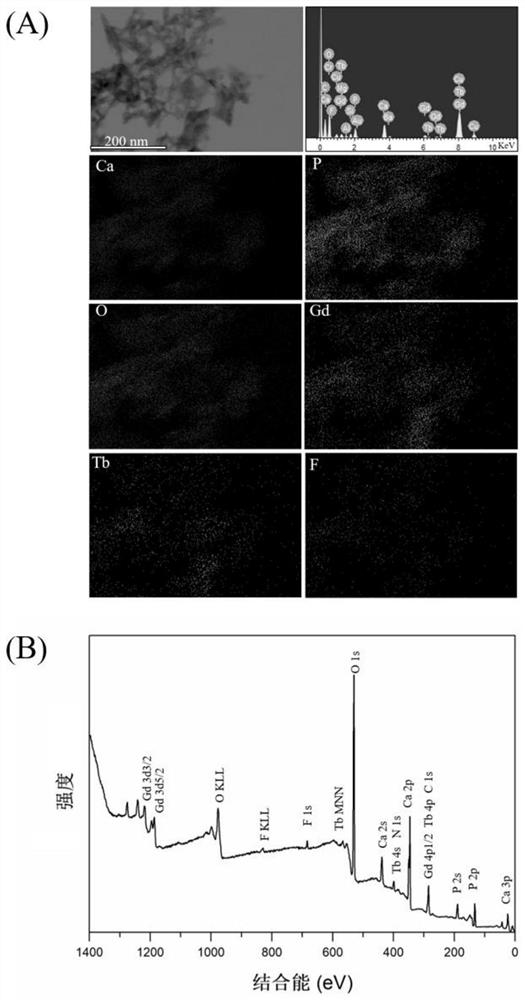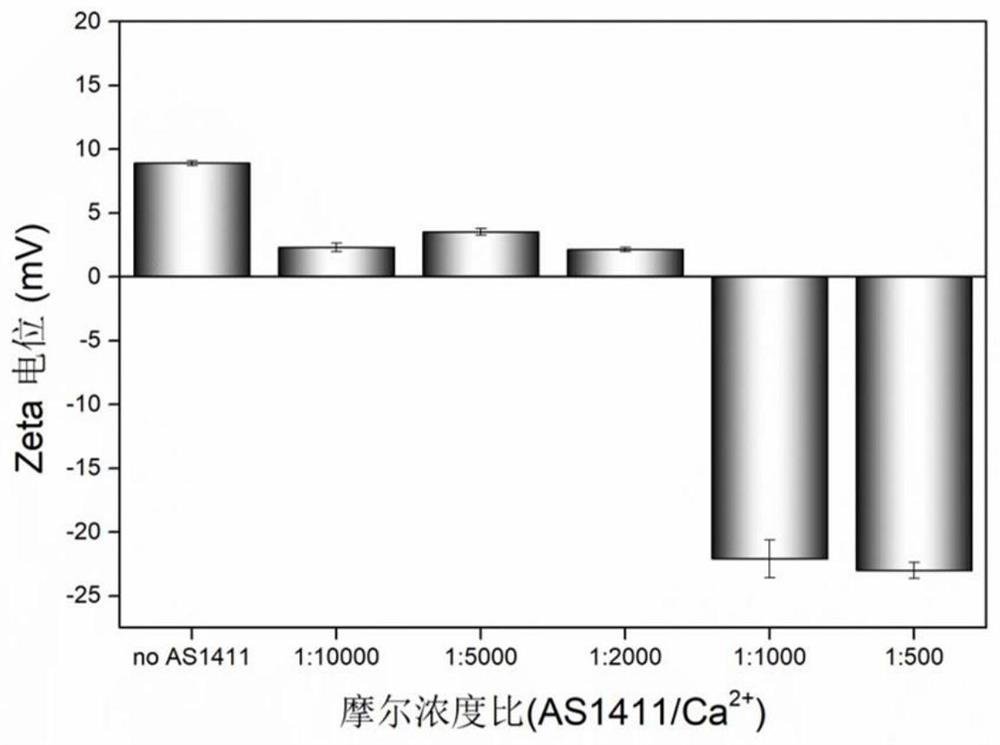A method for synthesizing bimodal nano-hydroxyapatite using nucleic acid aptamer as a template
A nano-hydroxyapatite and nucleic acid aptamer technology is applied in pharmaceutical formulations, nuclear magnetic resonance/magnetic resonance imaging contrast agents, preparations for in vivo experiments, etc., to achieve clear imaging, small crystal particle size, and cell entry efficiency. high effect
- Summary
- Abstract
- Description
- Claims
- Application Information
AI Technical Summary
Problems solved by technology
Method used
Image
Examples
Embodiment 1
[0027] In this example, nano-hydroxyapatite is simply and quickly synthesized by using nucleic acid aptamer as a template, and doped with rare earth ions with imaging function, so as to obtain bimodal nano-hydroxyapatite with cancer cell target recognition function . We use the nucleic acid aptamer AS1411 and Ca 2+ The electrostatic adsorption effect enables the synthesis of nHAp using AS1411 as a template, and through the ion exchange characteristics of nHAp, it is doped with rare earth ions with fluorescence imaging and MRI imaging functions. The specific process for the simple and rapid synthesis of bimodal nano-hydroxyapatite using nucleic acid aptamers as templates is as follows (the total volume of the reaction system is 1 mL, the molar concentration of AS1411 in the system is 50 μmol / L, Ca 2+ Molar concentration of 50mmol / L, PO 4 3- The molar concentration of 30mmol / L, Gd 3+ The molar concentration of 7.5mmol / L, Tb 3+ The molar concentration of 7.5mmol / L, F - The ...
Embodiment 2
[0032] Investigate the elemental composition of AS1411-nHAp:Gd / Tb synthesized in Example 1, measure the elemental composition of the synthetic material by transmission electron microscopy (EDS) and X-ray photoelectron spectroscopy (XPS), the results are as follows figure 2 shown.
[0033] From figure 2 It can be seen that the synthesized AS1411-nHAp:Gd / Tb contains elements Ca, O, P, F, Gd, and Tb, which proves the successful synthesis of bimodal nHAp.
Embodiment 3
[0035] Using the same method as in Example 1, only adjusting AS1411 and Ca 2+ The molar concentration ratios are 1:500, 1:1000, 1:2000, 1:5000, 1:10000 and AS1411-free respectively. Others are the same as in Example 1, and corresponding AS1411-nHAp:Gd / Tb samples and AS1411-nHAp:Gd / Tb samples without Control sample of AS1411. Investigate AS1411-nHAp:Gd / Tb and control samples in different AS1411 and Ca 2+ The Zeta potential and the particle size under the molar concentration ratio are measured by a nanometer particle size potentiometer, and the results are as follows image 3 and Figure 4 (A) shown. From image 3 It can be seen that with the increase of the molar concentration of AS1411, the potential changes from positive to negative, which can prove the successful modification of AS1411; the greater the absolute value of Zeta potential, the better the stability of nanomaterials, when AS1411 and Ca 2+ When the molar concentration ratio of the nHAp is 1:1000, nHAp is alrea...
PUM
 Login to View More
Login to View More Abstract
Description
Claims
Application Information
 Login to View More
Login to View More - R&D
- Intellectual Property
- Life Sciences
- Materials
- Tech Scout
- Unparalleled Data Quality
- Higher Quality Content
- 60% Fewer Hallucinations
Browse by: Latest US Patents, China's latest patents, Technical Efficacy Thesaurus, Application Domain, Technology Topic, Popular Technical Reports.
© 2025 PatSnap. All rights reserved.Legal|Privacy policy|Modern Slavery Act Transparency Statement|Sitemap|About US| Contact US: help@patsnap.com



